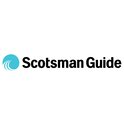The end of ‘revenge travel’ has arrived for hotels

The U.S. hotel sector has been on a roller-coaster ride for the past three years. After fears of Armageddon became paramount for much of 2020, COVID-19 vaccines and pent-up demand quickly brought the phrase “revenge travel” into our lexicon as people sought experiences they missed during the early stages of the pandemic.
Hotel occupancy rates rebounded and average daily room rates soared as households looked to spread their wings and spend their excess savings. But as we know too well, nothing lasts forever. Stimulus funds have dried up, home price appreciation is stagnant or declining, and equities are currently on their own bumpy ride. And while a national recession is far from guaranteed at this point, an economic softening is upon us.
The overall labor market will remain relatively tight over the next couple of years, given an imbalance in skill and a general shortage of workers, but companies have already been conducting layoffs, particularly in middle-management positions. Elevated uncertainty for these middle-class workers will surely dampen their plans for lavish travel this summer.
This is not to say that the bottom is about to fall out for the hospitality sector, but the reaction of hotel performance metrics to lower leisure demand will be an intriguing summer story. To gauge the impact of economic changes upon the hotel industry, let’s sift through some of the most relevant demand drivers.
Positives: Excess savings is declining but still in the black. As of February 2023, excess savings (or the extra money consumers saved beyond the level they would have without the pandemic) was approximately $1.5 trillion. This is well below the September 2021 peak of $2.5 trillion but is nothing to scoff at. Some cushion remains for those who have lost jobs, or fear a job loss, but these funds will most likely be saved or used for necessities.
Negatives: Retail sales growth has weakened over the past year. March 2023 spending levels were roughly level with their October 2022 reading. Service-sector performance is still outpacing that of goods, but consumers have been tightening their purse strings across the board. In fact, with annualized inflation still running well above normal, spending levels declined throughout much of the winter and spring. It’s likely that this will turn around a bit as lagging tax returns make it into consumers’ hands, but as previously mentioned, fear and uncertainty tend to lead to more conservative spending habits.
